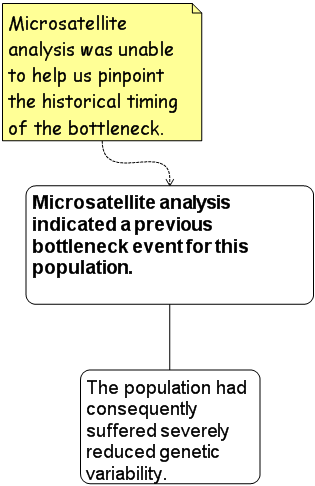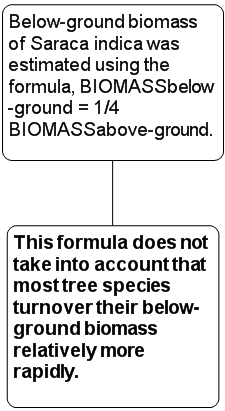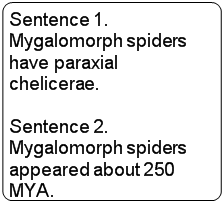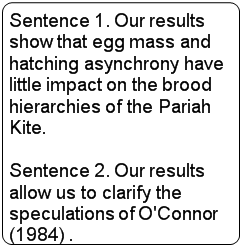The Science Of Scientific Writing Set H Location in Sentences Multi-part Sentences Exercise 1 Maps for Sentences Exercise 2 Simple Sentences Final Page .
OVERVIEW: The way to well-written science
PART I: Paragraphs and Sentences
SET A: Paragraphs: The Maps Behind Them
SET B: Paragraphs: Using Maps to Meet Readers' Expectations
SET C: Paragraphs with Something Extra: Points and Tails
SET D: The Generic Section: Expectations and Maps as Blueprints
SET E: Scientific Sections: The Methods and Results
SET F: Scientific Sections: The Discussion
SET G : Scientific Sections: The Introduction
SET H : Sentences
SET I : The Paper as a Whole
PART II: The Paper and its Sections
SET 1: Argument Parts
SET 2: Indicator Words
SET 4: Locating Arguments in Prose
SET 5: Rationale's Essay Planner
SET 6: Evidence in Arguments: Basis Boxes
Synthesis 1: Position-Early Paragraphs
Synthesis 2: Position-Final Paragraphs
Synthesis 3: Writing a Discussion I
Synthesis 4: Writing a Discussion II
Exercise 1
Group 1
In this first group of exercises you must combine a number of sentences into a single multi-part sentence. The sequence of sentence parts should follow the sequence of appearance of the original sentences in the maps provided (following our usual sequence-system, described near the bottom of this page). One of the sentences in each map will be shown in bold: that sentence must be included as an independent main clause (i.e. it should have a stand-alone, sentence-like quality). Other sentences can be included as another main clause, as a dependent clause or as a phrase.
To reduce the amount of typing you need to do, you can drag the maps to the Rationale workspace (you must use Rationale's inline browser).
Worked Example:
Text: A most curious animal, the egg-laying platypus is considered a mammal because it has fur and suckles its young, two features considered diagnostic of a mammal.
(four parts: phrase, main clause, dependent clause, phrase).
Group 1 Exercises
A.
B.
C.
Group 2
In this second group of exercises you must also combine a number of sentences into a single multi-part sentence. But in this group, you must compose multiple versions of each set, either two or three, depending on whether you are given two or three sentences to begin with. The different versions will differ in whether the final sentence part is derived from sentence 1, 2 or 3. The original sentences can be included either as a main clause, a dependent clause or a phrase (but of course any sentence must contain at least one main clause).
To reduce the amount of typing you need to do, you can drag the maps to the Rationale workspace.
Worked Example:
Version 1: Mygalomorph spiders, which appeared about 250MYA, have paraxial chelicerae.
Version 2. Mygalomorph spiders, which have have paraxial chelicerae, appeared about 250 MYA.
Group 2 Exercises
A.
B.
C.
D.
......








